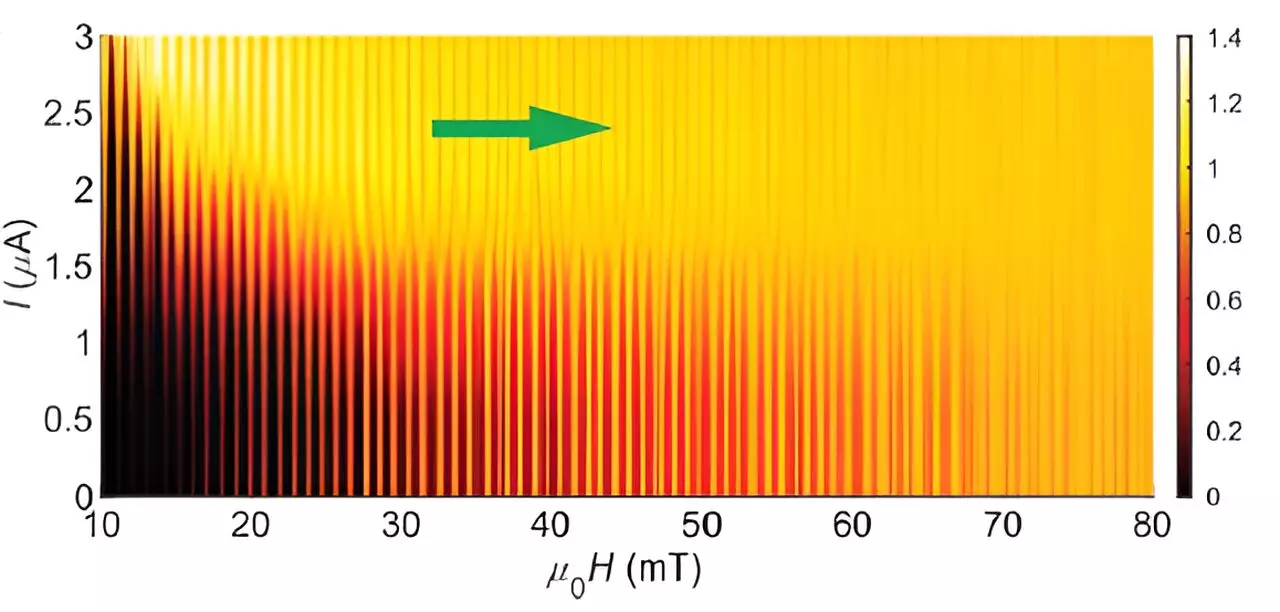Topological materials have emerged as a captivating field in condensed matter physics, characterized by their unusual electronic properties stemming from the intricate behavior of their wavefunctions. Unlike conventional materials, where electron behavior is predictable and homogeneous, topological materials exhibit phenomena that can be viewed as a dance between order and disorder at a quantum level. The wavefunction—the mathematical description that depicts the quantum state of electrons in these materials—can become knotted or twisted. This twist not only informs how electrons behave in the bulk of the material but also radically alters their behavior at the edges, leading to the formation of what scientists label as “edge states.”
Edge states are a remarkable hallmark of topological materials, forming at the interface between the material and its environment. When the wavefunction encounters a boundary, it must “unwind,” resulting in electrons at the edge displaying distinct properties compared to their bulk counterparts. This behavior can be likened to a stream of water meeting the shore; while the water flows freely at the center, the edges are constrained by their surrounding environment, creating a unique dynamic. Within topological superconductors—materials that can exhibit superconductivity—the behavior of bulk and edge states becomes even more intriguing. They are two intermingled pools of characteristics that do not mix smoothly, presenting a fascinating paradox worthy of further exploration.
Recent research published in *Nature Physics* has shed light on the exceptional characteristics of molybdenum telluride (MoTe2) as a topological superconductor. When MoTe2 transitions into a superconducting state, scientific observations reveal that superconducting edge currents within the material can endure substantial fluctuations in the “glue”—the interaction that forms pairs of electrons. This electron pairing is crucial as it directly influences the material’s ability to conduct electricity without resistance. The study indicates that this ability to sustain edge supercurrents presents opportunities to develop innovative quantum technologies, introducing the potential for groundbreaking advancements in electronics and quantum computing.
At the forefront of theoretical predictions lies the fascinating concept of anyons, exotic particles that exist only in two-dimensional systems. Unlike conventional particles like electrons, anyons maintain a memory of their position due to a property known as fractional statistics. This unique characteristic allows for a novel approach to quantum computing, offering a robust error-protection mechanism. The ability to manipulate and arrange anyons through edge supercurrents in topological superconductors like MoTe2 empowers researchers not only to envision new computations but also to enhance the development of sustainable, energy-efficient electronics.
To explore the interplay of edge currents and electron pairing, researchers have studied the effects of depositing niobium (Nb) onto MoTe2. Niobium is known for its strong pairing potential, which has led scientists to investigate how this “strong glue” can enhance the superconducting properties of MoTe2. The study highlighted a vital interaction where the Nb pairing potential spills over into MoTe2, thereby influencing the electrons’ behavior in the latter. However, this compatibility is not seamless; it poses a challenge as discrepancies emerge between the two materials’ pair potentials, resulting in a fluctuating wavefunction at the boundary. When edge electrons switch between these differing potentials, the oscillations in supercurrent can become chaotic or exhibit noise, signifying incompatibility.
The breakthrough insights from recent studies on topological superconductors emphasize the complex relationships that govern electron interactions in these novel materials. The distinctive edge supercurrents in MoTe2 present a fresh avenue for inspecting the interplay of superconductivity and topology, paving the way for potential advancements in quantum technology and energy efficiency. As researchers continue to unravel the mysteries of topological materials, the potential applications—from robust quantum computers to improved superconducting electronics—beckon a new era of technological innovation that could redefine our understanding of physics itself.

